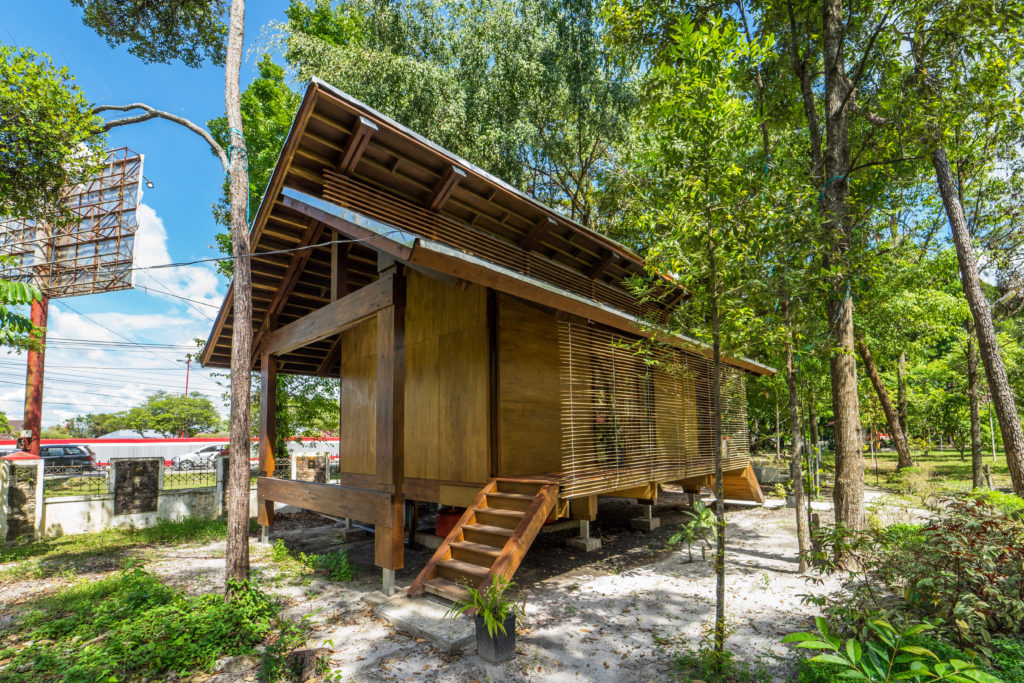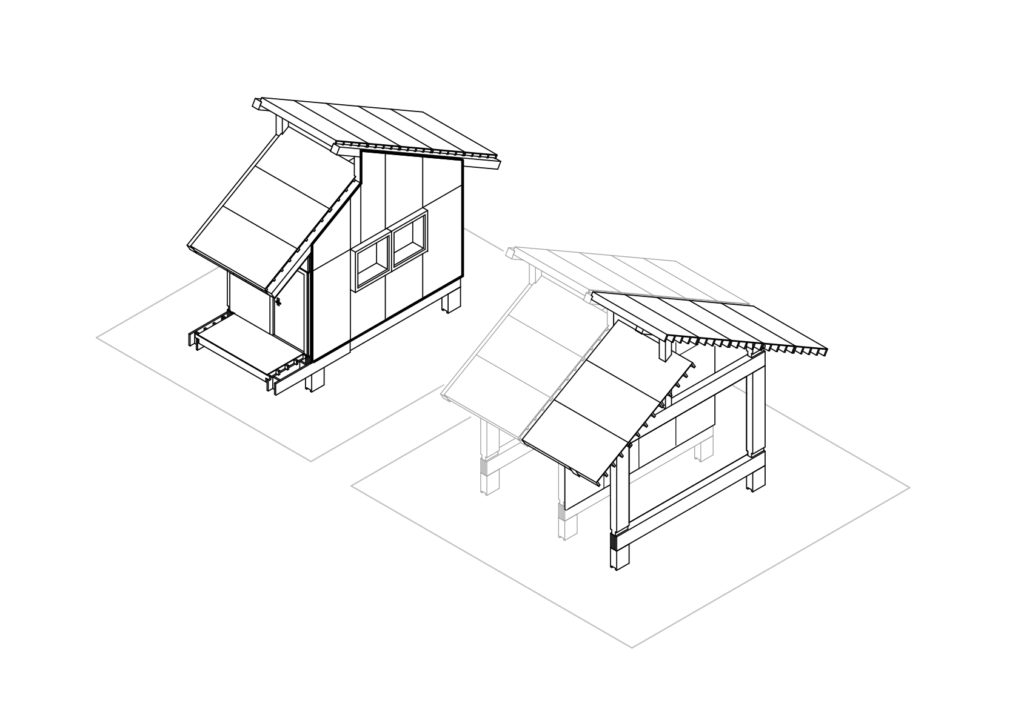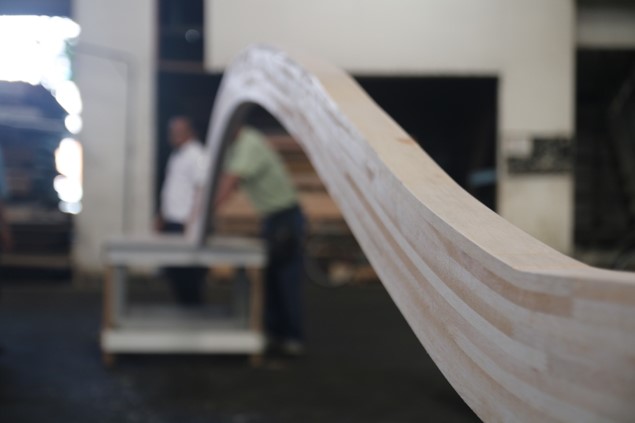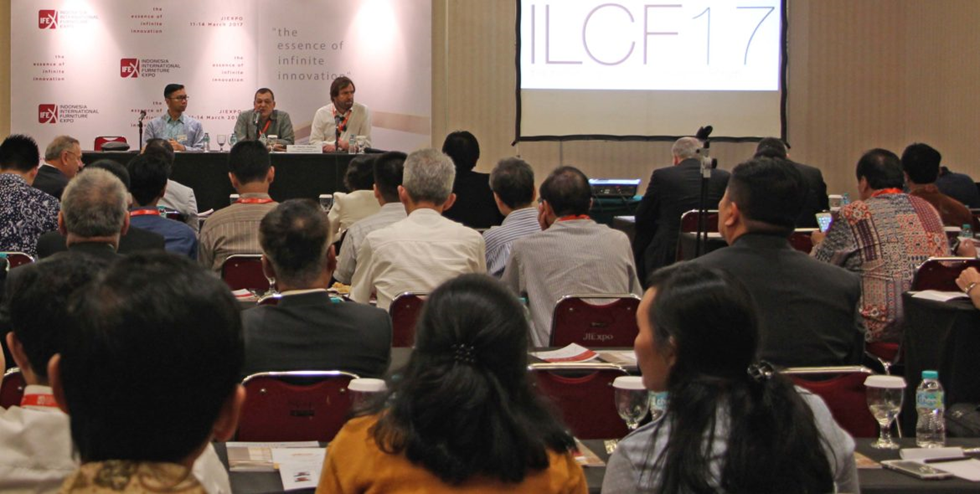by Alina Koger
Fairventures Worldwide has partnered with Löffler_Schmeling architects and the Karlsruhe Institute of Technology (KIT) to implement a pilot project made out of a lightweight timber construction based on wood from reforested areas.

The goal was to develop a sustainable wood construction system for the use in tropical countries made with locally available materials. The system had to be easy to join and easy to transport. It should adapt the traditional construction method in a contemporary way and thus meet the climatic conditions of the rainy, humid, and warm climate zone.
A modular system was developed that is easy to implement and focuses on the use of lightwood which has many advantages, including the ability to grow quickly, to thrive on degraded soils, and material properties that lend themselves well to engineered timber products.
At Karlsruhe Institute of Technology (KIT), Sengon Lightweight Timber in the form of glued lightwood panels was subjected to several load tests, to prove that it is stable enough to be used in a load bearing construction and resistant enough to humidity. The assembly of a module was then conducted at KIT facilities and passed subjected tests. An article about the test assembly was published here: https://lightwood.org/innovative-wood-construction-system-made-of-sengon-lightweight-timber-for-subtropical-climates-has-passed-kit-tests/ Based on these results, the modular system was slightly adapted and thereby optimized.
Before erecting the building on site, several material tests were conducted in Indonesia as well. Different wood species (including Acacia Hybrid, Hantangan and Jabon) were exposed to weather conditions and monitored over a period of time. Moreover, Sengon Lightwood was treated with various wood treatment products to see possible changes in Sengon Lightwood and to identify a product to use.
Unfortunately, the project coordination and preparation were severely affected by the Covid-19 Pandemic. The planned completion of the pilot project could not be realized in 2020 as planned. Yet, the interim period was used to optimize materials and panel sizes used and to establish new cooperations. Together with architects and statistical engineers a smarter and lighter load bearing structure was developed, based on Lightwood Red Jabon (Anthocephalus Macrophyllus) Timber. For producing the Red Jabon glulam beams, Fairventures decided to work together with PT Woodlam. PT Woodlam is the first Indonesian glulam and CLT (Cross Laminated Timber) producer. In order to produce 10m3 glulam beams, 23m3 Red Jabon sawn timber had to be sourced.
The Sengon veneer used for facade and modular elements was assembled into multi-layer components.
In the carpentry they were connected into modular elements using mechanical fasteners and PU glue. Roof, ceiling, and floor elements are designed as wooden panel elements with transverse ribs, whereby the floor and ceiling elements are planked on one side only. The planking is flexibly connected to the structure by bolting at regular intervals.
Wall elements can be used transversely to the frame plane as well as in the frame plane to provide room closures and to meet the stiffening requirements of the structure. The overall structure can be composed of several modules, whereby the requirements for bracing perpendicular to the frame plane must be met. For the pilot project three modules with one additional canopy module on each side was built in Palangka Raya.

A particular challenge in dealing with lightweight wood is its low density, which requires special consideration during processing. Scuffs and scratches on the products can occur much more easily during production and construction, and a certain amount of caution must be exercised, especially when working with nails, screws, and dowels.
Although a conducted Life Cycle Assessment shows that Sengon plywood is not carbon neutral, the environmental performances are outstanding, especially when it is compared to conventional construction materials such as concrete, steel and aluminium. The capability of wooden materials to store carbon, and further CO2, is a powerful feature of wood as a construction material which proves claims about the huge potential of Modular Lightwood Timber Constructions when it comes to positive environmental impact. More about the Environmental performance of Albasia plywood production can be found here: https://lightwood.org/environmental-performance-of-albasia-plywood-production-screening-lca/
We believe this pilot project sets a new milestone in the development of timber construction in Indonesia. It is based on timber from reforested areas and serves as a showcase that lightwood can be a competitive construction material that is more environmentally friendly compared to other building materials. Therefore, the exemplary implementation of this modular house opens a new door for the development of a sustainable lightwood industry in the country. The increased use of wood as a renewable raw material can represent a lever for improving resource efficiency.
Lastly, it could vastly increase the size of the market for these fast-growing timber trees, that are predominantly cultivated by smallholder farmers. This would lead to increased, sustainable incomes for the farmers and a much-reduced dependency on exploitative means of income generation (small scale mining or illegal logging).
The pilot project presented here is located at the grounds of the Forestry Agency of Central Kalimantan in Palangka Raya and was opened in October 2022. The grand opening was attended by representatives of the German parliament as well as from the Indonesian Government at national and regional level and received positive feedback from all parties. Sri Suwanto spoke on behalf of the Governor of Central Kalimantan: “This is a great innovation and a good way to promote lightwood species. It will encourage a lot of local farmers to plant more of it.”
The project was funded by the German Federal Environment Foundation (DBU) and the Good Energies Foundation.


Construction phase


Finished pilot project made using a lightweight timber construction









